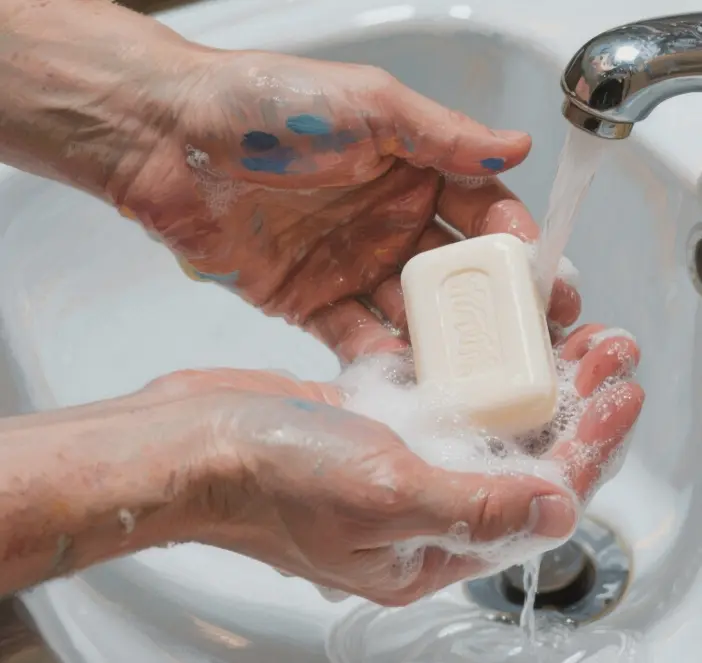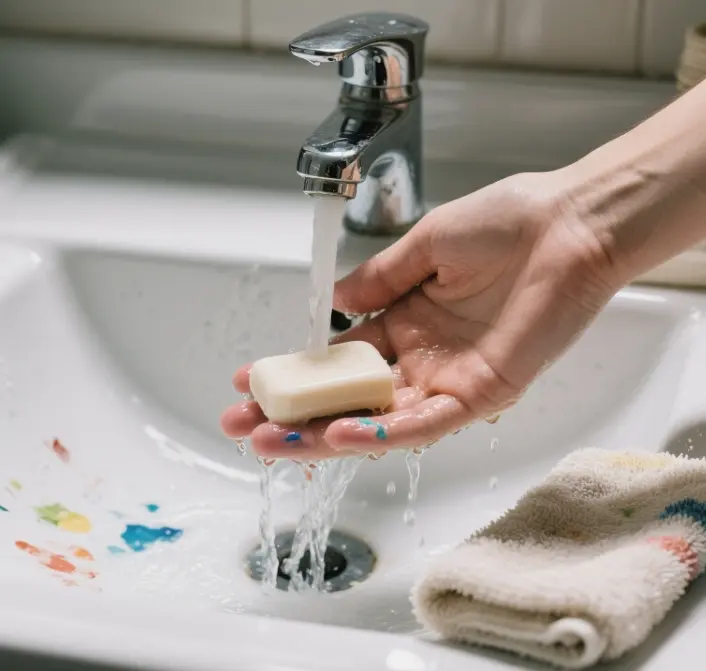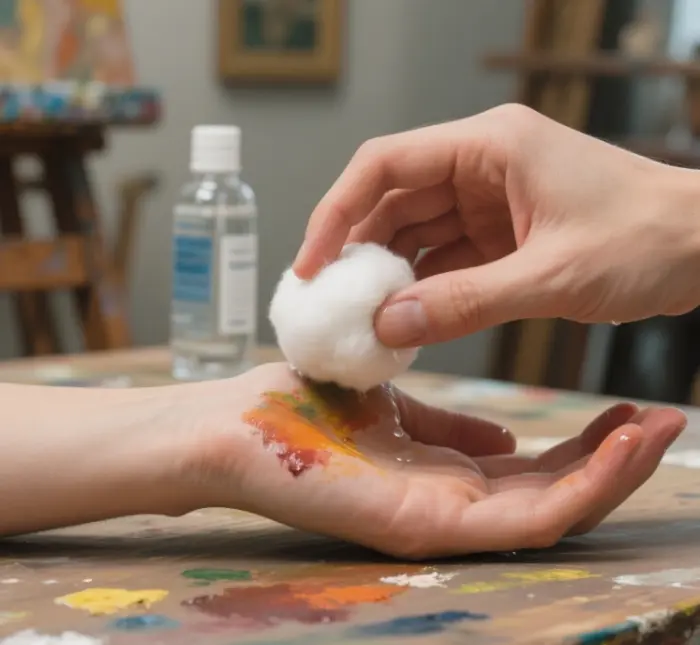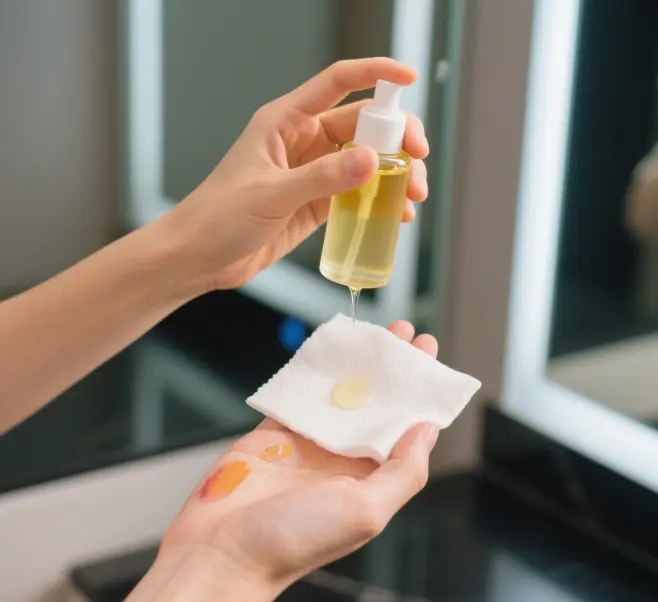Removing oil paint from the skin requires a suitable method depending on the type of paint, the duration of exposure and the condition of the individual’s skin. This article introduces a variety of effective cleaning methods, including oil-based cleaning methods, solvent cleaning methods, hot water soap cleaning methods and special cleaning products. We also emphasize the importance of preventive measures and long-term skin care.
For artists and hobbyists, understanding the properties and potential hazards of oil paints, taking proper precautions, and having the right cleaning methods are key to ensuring that artwork is done safely. Remember, skin health should not be ignored and personal health should always be a priority, even in the pursuit of artistic creation.
The main risks of dermal contact with oil paints
The main risks of dermal contact with oil paints include:
- Harmful substance penetration: prolonged skin contact may cause harmful substances in the pigments to penetrate into the skin.
- Skin irritation: Some pigment components may cause skin sensitization or irritation.
- Risks to special populations: Special care should be taken to minimize exposure to women during pregnancy, as certain pigment components may have an effect on fetal development.
Safety advice on the use of oil paints
To minimize the risk of skin contact with oil paints, professional organizations and artists often recommend:
- Avoid direct contact: do not apply the paint directly with your fingers
- Use protective equipment: wear personal protective equipment such as gloves and masks
- Avoid contact with the mouth and eyes: paint is non-edible, do not tip brushes with your mouth.
- Prompt cleansing: Wash your skin thoroughly after painting.

Characteristics and cleaning difficulty of different types of pigments
Difference between oil and acrylic paints
Oil paints and acrylic paints are two common types of painting pigments that differ significantly in their composition and usage characteristics:
Advantages of acrylic paints:
- Cheaper than oil paints
- Easier to use and clean
- They do not require toxic solvents
- do not produce strong odors
- Slightly translucent after drying, not easy to crack after bending 90-180 degrees
Cleaning Difficulty Comparison:
Acrylics are easier to clean than oils, and some creators report that acrylics can be easily removed with makeup remover, wipes, or beauty wipes.
Cleaning differences between watercolor and oil paints
There are also differences in cleaning methods between watercolor and oil paints:
Cleaning of watercolor paints:
- You can use hand soap dampened and rubbed in
- Wash with warm water
- For face paint, you can use makeup remover cotton pads with eye makeup remover.
Difficulty in cleaning oil paints:
because oil paints use an oil-based medium, they usually require the use of oil-based solvents or special cleaning products to remove them effectively

Ways to Remove Oil Paint from Skin
Based on various sources, the following are effective methods for removing oil paint from skin. Please note that different types of pigments and individual skin conditions may require different treatments.
Basic Cleaning Steps
Before attempting any cleaning method, please assess the type of pigment, the duration of exposure and the sensitivity of the skin. For the face or sensitive areas, it is advisable to test the reaction of the cleaning method on a small area of skin.
Common Cleansing Methods
Common Cleansing Methods
1、Oil-based Cleaning Methods
Oil paints often use an oil-based medium, so oil-based cleaners may be most effective:
Peanut or salad oil method:
- Apply peanut or salad oil to the area of skin stained with paint
- Gently rub the affected area
- Add an appropriate amount of detergent and continue rubbing.
- Finish with a cloth and scrub again
2、Solvent Cleaning Method
Solvents can help dissolve oil-based pigments, but care should be taken when using them to avoid skin irritation:
Ammonia or cold ironing solution method:
- Gently rub the stained area with ammonia or cold iron.
- Repeat until the pigment is removed
Alcohol-based solvents:
- Use medical alcohol or a cleaning product containing alcohol
- Gently wipe the affected area
- Note: may need to be used diluted for sensitive skin
3、Hot Water Soap Cleaning Method
A combination of hot water and soap can be effective in removing pigments from the skin:
Hot Water Soak Method:
- Soak the stained area in hot water for approximately 5 minutes
- Scrub with soap
- May need to be repeated several times to completely remove the pigment[
4、Specialty Cleaning Products
Some special products may be particularly effective in removing pigments:
Makeup remover oil method (for face):
- Use a cotton pad dipped in makeup remover
- Gently wipe the pigment from the skin of the face.
- Be especially careful around the eye area
Soap method (from Shakeology user experience):
- Wet your hands with warm water
- Apply soap and rub carefully, especially on heavily pigmented areas.
- Rub for a minute or two and rinse off
- If there is still residue, try white vinegar or toothpaste
5、Other effective methods
Other effective methods shared by some users include:
- Soot method: use a damp towel dipped in soot to wipe the stained area
- White vinegar or toothpaste: if there is still residue after regular cleaning, you can use the acidic properties of white vinegar or the abrasive properties of toothpaste to clean further
- Professional beauty instruments: beauty instruments can quickly clean pigments

Professional Advice and Precautions for Pigment Cleaning
Cleaning methods for different areas
Different parts of the skin have different characteristics and sensitivities and should be cleaned differently:
Facial Cleansing:
- Prioritize gentle makeup removers
- Avoid rubbing, especially around the eyes.
- Use a cotton pad dipped in makeup removing oil and wipe gently
Hand cleansing:
- Use a more aggressive cleansing method
- Soak in hot water and scrub with soap.
- Repeat several times until the pigment is completely removed
Other body parts:
- Choose the appropriate cleaning method based on skin sensitivity
- Consider using an oil-based cleanser followed by soap.
Safety Precautions During Cleaning
The following precautions should be taken when cleaning oil paint from the skin:
Test for sensitivity:
- Before using any cleansing product, test it on a small area of skin to
- Make sure there is no irritation before full application
Avoid rubbing vigorously:
- Especially for the face and sensitive areas
- Use a gentle scrubbing method
Avoid direct contact with mucous membranes:
- Pigments and cleaning products can irritate the mucous membranes of the eyes and mouth.
- In case of accidental contact with the eyes during cleaning, rinse immediately with water.
Rinse promptly:
- Rinse thoroughly with water after cleaning.
- Ensure that no cleaning products or pigments remain
Handling of special cases
Pigment penetrates the skin:
- If the pigment has penetrated the skin significantly, longer cleansing may be required.
- Consider multiple cleansing sessions, observing the skin condition after each cleansing session.
Allergic reactions:
- If allergic symptoms such as redness, swelling, itching, etc. occur during the cleansing process
- Discontinue current cleansing method immediately
- Rinse with water and consider using anti-allergy medication or seeking medical attention.
Prolonged exposure:
- If the pigment is left on the skin for a long time
- A more thorough cleansing process may be required
- Consider consulting a dermatologist for advice






